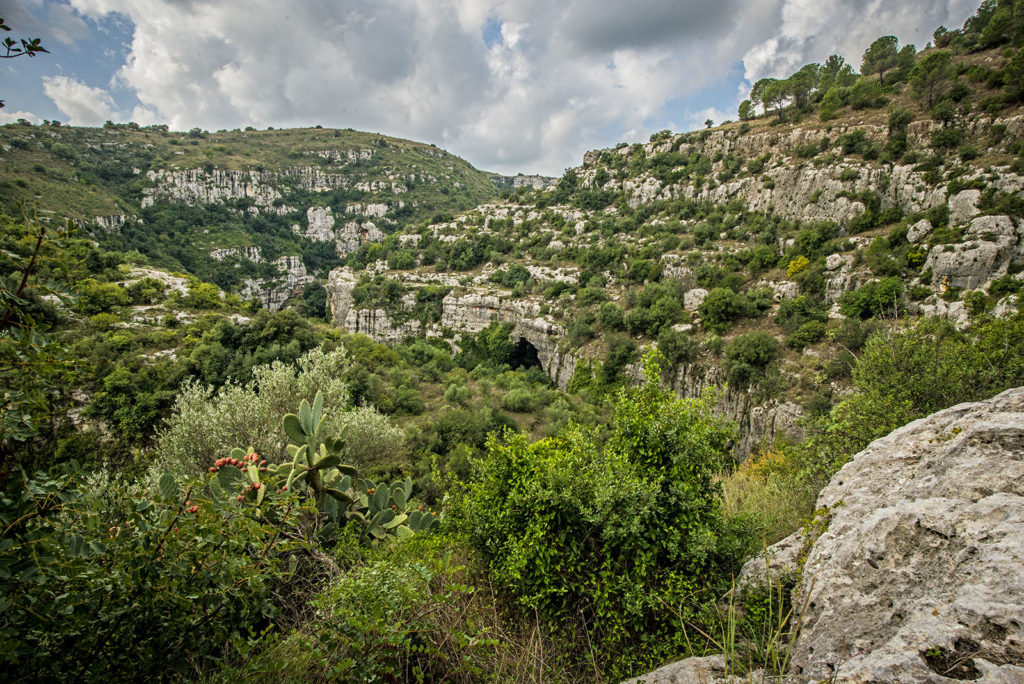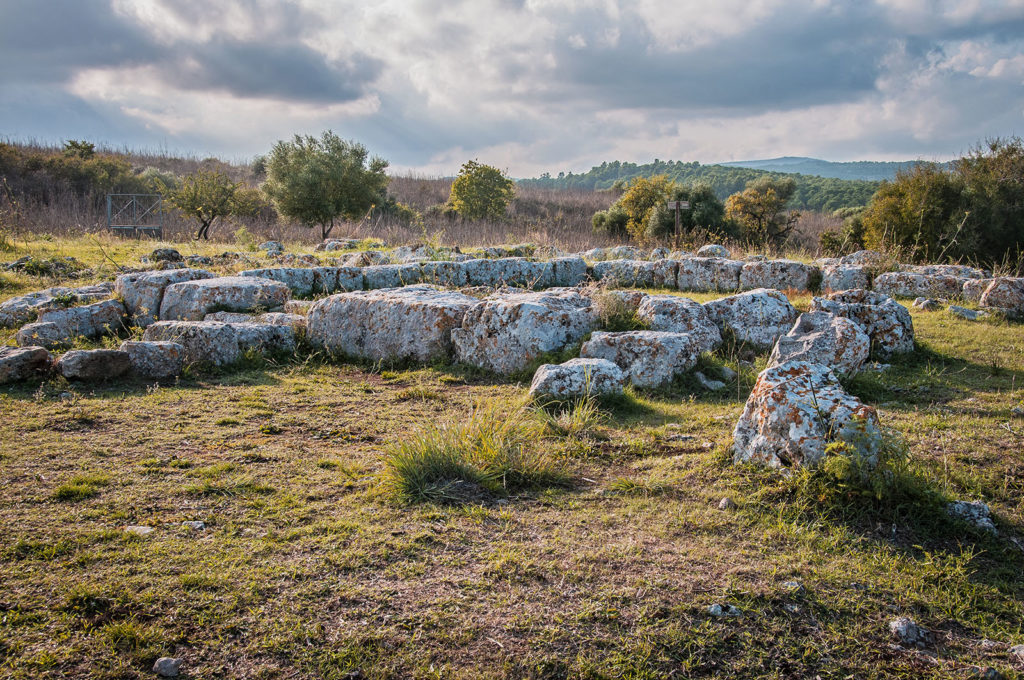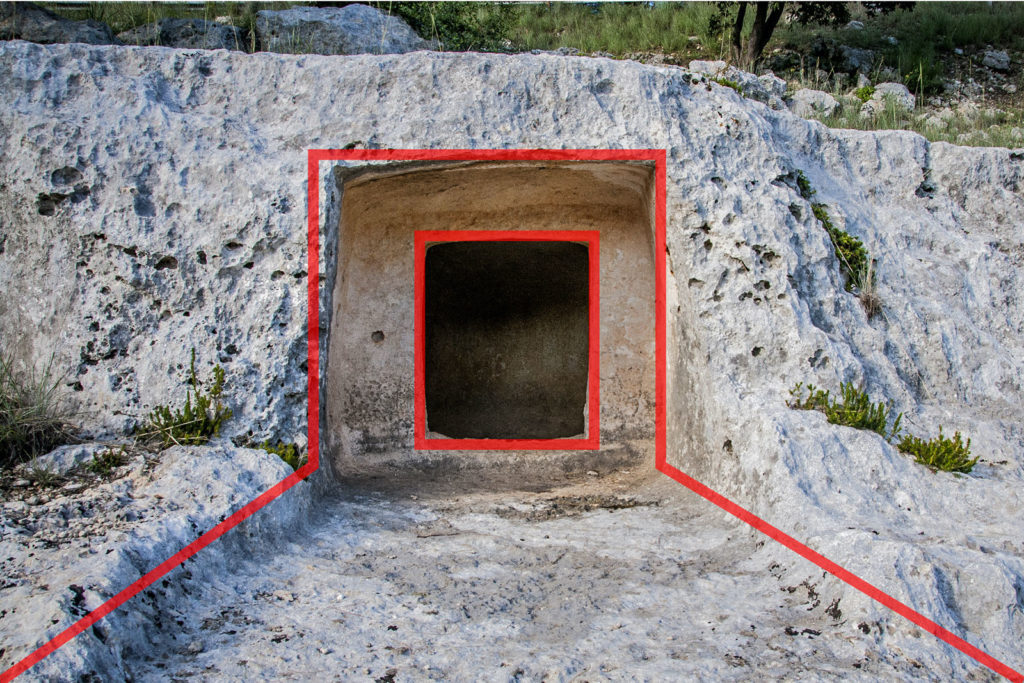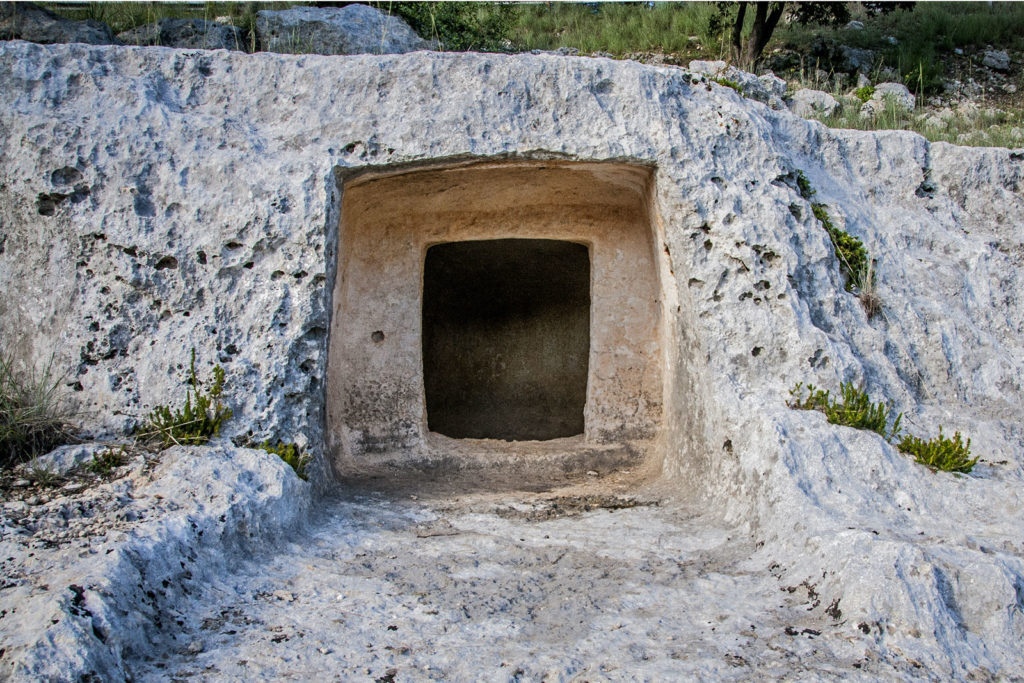“Earth” is a very important element for discovering the memory and identity of this archaeological site, where lush nature retreats to welcome the humans who populated it and their history.
 Pantalica is a peaceful place where plane trees, poplars, orange blossoms and many other species of plants and flowers offer life, colour and fragrance along the paths of the nature reserve.
Pantalica is a peaceful place where plane trees, poplars, orange blossoms and many other species of plants and flowers offer life, colour and fragrance along the paths of the nature reserve.
This territory was once the site of a large settlement. Numerous round or elliptical huts made of straw and branches were distributed on the high ground of this great prehistoric city. The necropolises, cities of the dead, unfolded on the sides of the mountain, while one of the highest points of the area was the Acropolis of Pantalica, where the “prince’s palace” was built:
the Anaktoron
.

What remains of this ancient city and its first inhabitants is a spectacular necropolis: a cemetery of more than 5,000 tombs dug into the mountainside. This particular type of tomb is called “a grotticella” (cave-like).
The grottoes were small chambers dug into the limestone with an opening to the outside, formerly covered by a decorated stone slab.


Each one could house many skeletons, as well as everyday objects, vases and pendants worn by the men and women.
Thanks to the numerous excavations, very important traces have emerged from the necropolises and underground, reconstructing the history of the ancient civilisation of Pantalica. Weapons, colourful vases, mirrors,
fibulae
and other artefacts are now kept at the Paolo Orsi Archaeological Museum in Syracuse. Each object represents a magic key to a story. It is only thanks to these discoveries preserved in the earth that today we can imagine and reconstruct the life that took place in mysterious places like the site of Pantalica!